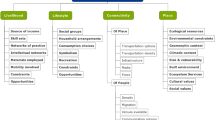Abstract
This paper uses the material garnered from studies of city management in Warsaw, Stockholm and Rome to ponder the question of the symbolic image of ‘the European capital’ which plays an important role in organizational practices of city management. Collection of such images revealed that the guiding image of a ‘European capital’ in Warsaw is that of the European capital city at the turn of the 20th century, whereas the guiding image in Stockholm is that of ‘European big city at the turn of the 21st century’. Rome aspires to become once more one of the ‘leading capitals in Europe’. What the three images have in common, however, is the idea that there exists a universal city image which, combined with the local tradition, should be guiding local practice and discourse. While it is easy to trace the influences of the common organizational field, that of city management, to which all three belong, it appears that ‘universal models’ are nevertheless locally assembled. An organizational field produces a repertoire of images which, with fashion as a selecting mechanism, serve as a material for construction of further images.
Similar content being viewed by others
Author information
Authors and Affiliations
Rights and permissions
About this article
Cite this article
Czarniawska, B. The European Capital of the 2000s: On Image Construction and Modeling. Corp Reputation Rev 3, 202–217 (2000). https://doi.org/10.1057/palgrave.crr.1540115
Published:
Issue Date:
DOI: https://doi.org/10.1057/palgrave.crr.1540115




